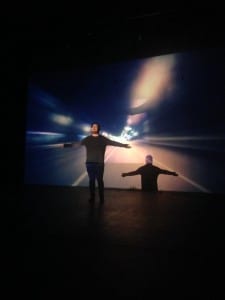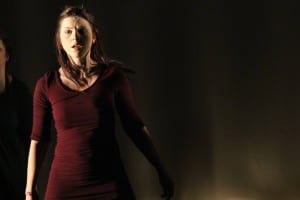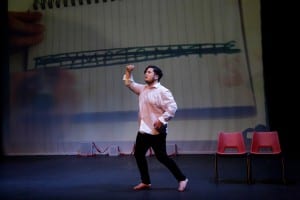Fill in the Blank Theatre have officially premiered their first show, The Man Whose Memories Fell Out. We have all been overwhelmed by such positive responses from our audience members, many shedding a tear or two at the storyline which clearly has effected many people in various ways. The production was met with great responses; we could not have hoped for a better audience and reaction to the piece. Many admired the narrative which followed The Man’s journey of losing his memory but holding on to his ability to play music, showing how ‘music can move us to the heights or depth of emotion’ (Sacks, 2007).
Although nervous, I really enjoyed the whole day from start to finish. We managed to complete two dress runs which really helped us iron out any spatial issues as the play really comes together in the space with all of the multimedia elements. In terms of lighting, there were some small changes that were made on the day of the performance. I felt that the piece did not need the somewhat stirring effect of a blackout. As we made the creative decision to place all of the actors onstage for the entirety of the piece, it would seem redundant to then use lighting to change the set for the next scene or get actors into position. Everything was left exposed: the rig, the boarders, props, costume and set. We did not want the illusion of naturalism. However, the audience were still left moved by the character’s emotional story.
The Man Whose Memories Fell Out was an unforgettable experience. I was proud to share the stage with such talented and enthusiastic individuals and it was great to raise awareness of such a harrowing illness.
Works Cited:
Sacks, O. (2007) Musicophilia. [online] Available from: http://www.oliversacks.com/books-by-oliver-sacks/musicophilia/ [Accessed 21 May 2015].


